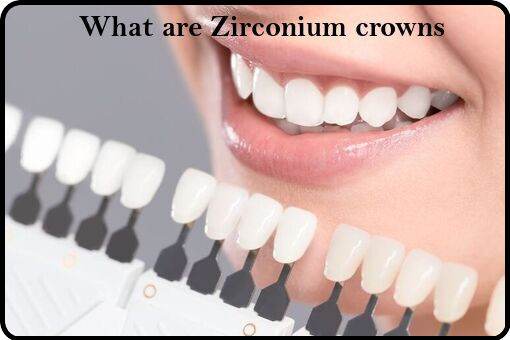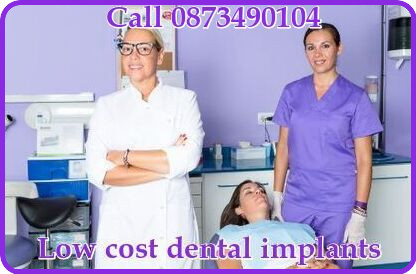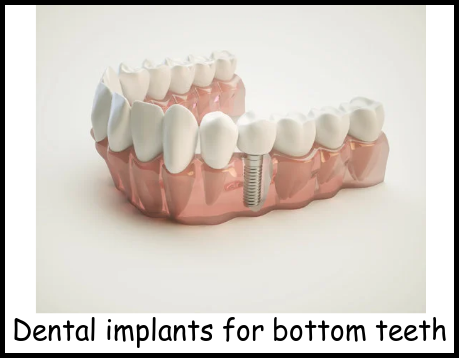Best dentist in Hungary
Thinking about going to Hungary for dental treatment and want to know about the best dentist in Hungary then you have found it.
Hungarian Dentists Wexford is your first stop to find out more about the range of dental treatments that we offer in our bigger clinic in Hodmezvasahely Hungary with aftercare in Wexford town.
It’s a bold claim to say the best dentist in Hungary.
However we feel that we have earned the title, Perfect Smile Dental Clinic in Hungary has the best dentist.
Because for the past 20 years patients from all over island of Ireland have been coming to our state-of-the-art dental clinic in Hungary for the highest quality dental treatments that include:
- Dental implants
- Dental crowns
- Dental veeners
- Gum augmentation
- Sinus lift
- Dental Bridge
- Dental hygiene
- Composite bonding
- Root canal treatment
- Dental restoration
- Root dental braces
- Inlays onlays
- Removable partial dentures
A little bit more about our dental services.
At the best dentist in Hungary clinic we specialize in dental implants.
Thousands of patients have come to our clinic from Ireland because of the quality of our work.
The materials that we use, the aftercare in our Wexford town clinic, the annual check-ups.
Most important of all the best dentist in Hungary offers the biggest savings on treatment.
Contact the best dentist in Hungary for a dental plan that will undoubtedly save you money when you travel to Hungary for dental treatment and return to Ireland for aftercare in Wexford.
Dental implants in Hungary
Oh, let me tell you, dental implants can completely transform your life!
With dental implants, you can finally say goodbye to the discomfort and embarrassment that comes with missing or damaged teeth.
Gone is the days of struggling to chew your favorite foods, avoiding social situations because of your teeth, or feeling self-conscious about your smile.
Dental implants are a natural-looking and a more permanent solution to missing teeth.
They are made of high-quality materials such as titanium and designed to function just like natural teeth.
Not only do they look and feel like real teeth, but they also preserve your jawbone structure and prevent further tooth loss.
The best part is that dental implants can improve your overall quality of life.
They can help you regain confidence in your smile, allowing you to express yourself freely without worrying about hiding your teeth.
You can also enjoy a wider variety of foods, improving your nutrition and your overall well-being.
In short, dental implants can change your life for the better. They are a long-lasting investment in your oral health and your overall happiness.
So, what are you waiting for?
Schedule a consultation with the best dentist in Hungary today and take the first step towards a happier, healthier smile!
Dental crowns
Dental crowns can be a game changer when it comes to your oral health and overall quality of life.
A dental crown, also known as a cap, is a covering that is placed over a damaged or weakened tooth to restore its strength, structure, and function.
When a tooth is cracked, chipped, decayed, or discolored, it can have a negative impact on your self-confidence and ability to eat, speak, and smile comfortably.
However, with a dental crown, you can regain your oral health and properly function again.
Crowns can also help to protect teeth from further damage and decay, preserving them for years to come.
In addition to the functional benefits, dental crowns can also enhance the appearance of your smile.
With options such as porcelain and ceramic crowns that are custom-made to match the color and shape of your natural teeth.
Your smile can look more beautiful and symmetrical than ever before.
Overall, dental crowns are a versatile solution that can make a significant difference in your daily life.
If you are experiencing any issues with your teeth, I would highly recommend that you speak with the best dentist in Hungary to see if dental crowns may be a good option for you.
Veneers
Dental veneers are custom-made thin shells that are placed on the front of your teeth to improve their appearance.
They are an effective solution for improving the overall look of your smile, and can make a significant impact on your self-confidence and your life.
One of the main advantages of dental veneers is that they can correct a variety of dental flaws, including chipped, discolored, or misshapen teeth.
Veneers can also help to close gaps between teeth or improve the appearance of crooked teeth.
By improving the appearance of your teeth, veneers can help to boost your self-esteem and make you feel more confident in your social and professional interactions.
You may find that you feel more comfortable smiling, speaking, and laughing in public, which can have a positive impact on your overall quality of life.
Additionally, veneers are a long-lasting and durable solution, and with proper care and maintenance, they can last for several years.
They are also stain-resistant, meaning that you can continue to enjoy your favorite foods and beverages without worrying about them staining your veneers.
Overall, dental veneers can be a life-changing solution for those seeking to improve their smile and overall appearance.
Contact the best dentist in Hungary to learn more about whether veneers is the right solution for you.
Gum augmentation
Gum augmentation is a dental procedure that involves adding tissue to the gums in order to improve their appearance and function.
There are several reasons why someone may choose to undergo a gum augmentation.
These reasons include gum recession due to periodontal disease, genetic factors, or simply a desire for a more attractive smile.
The gum augmentation process typically involves either a gum graft or gum contouring. In a gum graft procedure, tissue is taken from another area of the mouth or from a donor and placed over the recessed gums.
This not only improves the appearance of the gums but can also help to protect the roots of the teeth from further damage.
Gum contouring, on the other hand, is a procedure in which excess gum tissue is removed in order to create a more even gum line and give the teeth a more symmetrical appearance.
This procedure is often used in cosmetic dentistry to improve the aesthetics of the smile.
Both gum grafts and gum contouring can be performed by a periodontist or a cosmetic dentist, depending on the specific needs of the patient.
If you are interested in gum augmentation, it is important to consult with the best dentist in Hungary to determine the best course of treatment for your unique situation.
Sinus lift in Hungary
A sinus lift is a surgical procedure that is performed by oral surgeons or periodontists to increase the bone height of the upper jawbone in preparation for dental implant placement.
This is necessary in cases where the patient has insufficient bone density and height to support the implant.
During the procedure, the oral surgeon will make an incision in the gums and create a small window in the side of the jaw.
The surgeon will then lift the lining of the sinus cavity and place bone graft material into the space created. This typically encourages new bone tissue to grow.
After the procedure, the patient may experience some swelling, discomfort, and minor bleeding.
However, with proper care and healing time, the bone graft will fuse with the existing bone, allowing for successful implant placement.
It is important to consult with the best dentist in Hungary to determine if a sinus lift is necessary in your case and to discuss the details of the procedure.
A dental bridge
A dental bridge is a type of dental restoration used to replace one or more missing teeth.
The bridge consists of a false tooth, which is called a pontic, and two dental crowns that are placed on the teeth adjacent to the gap.
The crowns serve as anchors for the pontic, holding it securely in place and restoring the patient’s ability to bite and chew.
Dental bridges can be made from a variety of materials, including porcelain, ceramic, or metal alloys.
The choice of material depends on factors such as the location of the bridge and the patient’s personal preferences.
Typically to get a dental bridge will involve two or more dental visits.
During the first appointment, the adjacent teeth are prepared by removing some of the tooth enamel to accommodate the crowns.
Impressions are then taken of the teeth, which are sent to a dental lab so that the bridge can be custom-made.
A temporary bridge is usually placed on the teeth to protect them while the permanent bridge is being made.
Once the permanent bridge is ready, the patient returns to the dentist for a second appointment.
The dentist checks the fit of the bridge and makes any necessary adjustments before securing the crowns on the adjacent teeth with dental cement.
Overall, dental bridges are a common and effective way to restore missing teeth and improve oral health.
If you think a dental bridge might be right for you, I would recommend speaking with the best dentist in Hungary to learn more.
Composite bonding
At the best dentist in Hungary we offer composite bonding.
The treatment is a dental procedure that involves bonding a tooth-colored composite resin material to the teeth to repair or enhance their appearance.
This resin material is composed of plastic and glass particles that are shaped to match the existing teeth.
Composite bonding is a common cosmetic dental treatment used to correct a variety of dental issues.
Theses include chipped, cracked, or broken teeth, gaps or spaces between teeth, stains or discoloration, and misshapen teeth.
The procedure is often done in a single visit, is relatively affordable, and requires very little alteration of the natural teeth.
Composite bonding is a safe and effective way to improve the look and function of your teeth, and can greatly enhance your smile.
However, it is important to consult with a qualified dental professional to determine if composite bonding is the right treatment for your specific dental needs and goals.
Root canal treatment
The best dentist in Hungary offers root canal treatment, also known as endodontic therapy, is a dental procedure that is aimed at saving an infected or damaged tooth.
It involves removing the infected or inflamed pulp (the soft tissue inside the tooth that contains nerves and blood vessels) and cleaning out the root canals.
The canals are then filled with a special material to prevent bacteria from re-entering the tooth.
Root canal treatment is typically recommended when tooth decay has reached the pulp, causing infection and inflammation, or when a tooth is injured or cracked.
Symptoms of a damaged pulp may include pain, sensitivity to hot and cold, and swelling in the gum area around the tooth.
Left untreated, a damaged pulp can lead to an abscess, which can cause intense pain and other serious complications.
Root canal treatment is typically done under local anesthesia, which means you will be awake but unable to feel pain.
The procedure may require two or more visits to complete, depending on the severity of the infection or damage.
After the procedure, your dentist may prescribe antibiotics or pain medication to manage any discomfort.
While root canal treatment has a reputation for being painful, most patients report only mild discomfort after the procedure.
The success rate of root canal treatment is very high, and the treated tooth can last a lifetime with proper care.
However, it is important to maintain good oral hygiene and schedule regular dental check-ups to ensure the health of your treated tooth and overall oral health.
Dental restoration in Hungary
At the best dentist in Hungary dental restoration is a vital aspect of dental care, particularly in cases where the integrity of a tooth has been compromised.
One form of dental restoration that’s commonly used to restore damaged or decayed teeth is root dental restoration.
This type of treatment involves removing infected or decayed tissue from the root canal in the tooth.
The root canal is then cleaned, shaped, filled and sealed to protect it from further damage or decay.
Root canal treatment is typically recommended when a tooth has suffered damage or disease that has affected the dental pulp or nerve within the root canal.
The procedure is done under local anesthesia, which ensures the patient does not feel any discomfort during treatment.
After the procedure, it is essential to take good care of the treated tooth to help it heal correctly.
In conclusion, root dental restoration is a highly effective technique used to restore damaged or decayed teeth.
It helps to maintain the tooth’s natural structure and avoid the need for extraction.
If you’re experiencing symptoms such as toothache, tooth sensitivity, or swelling, it’s advisable to visit a dentist for a checkup to determine the best course of action to restore the tooth’s health.
Root dental braces
Root dental braces, also known as root-canal braces or endodontic braces, are a specific type of dental brace.
They are used in cases where a patient has received root canal therapy and needs additional support to stabilize and maintain the affected tooth.
Root canal therapy is a procedure that is performed to remove diseased or damaged tissue from within a tooth’s root canals.
This therapy can weaken the structure of the tooth, making it more prone to shifting or breaking.
To address this issue, root dental braces are often used to provide extra support during and after the healing process.
The braces are attached to the tooth using cement and consist of a small metal loop that extends out from the side of the tooth.
That is connected to an arch wire that runs along the front of the teeth.
In some cases, a bracket may also be placed on the opposite side of the tooth for additional support.
Root dental braces are typically worn for several months or up to a year, depending on the needs of the patient and the severity of the tooth damage.
During this time, regular check-ups with a dental professional are required to monitor the progress of treatment and ensure that the braces are functioning as intended.
Inlays onlays
In the best dentist in Hungary inlays and onlays are two types of dental restorations that are used to repair teeth that are damaged or decayed.
Both inlays and onlays are considered to be partial crowns, as opposed to full crowns, which completely cover the tooth.
Inlays are typically used to repair teeth that have damage or decay within the cusps, the raised points on the biting surface of the tooth.
An inlay is a custom-made filling that is made in a dental laboratory to fit precisely into the prepared space.
Inlays are typically made from porcelain, gold or composite resin and they can provide a strong and aesthetically pleasing restoration.
Onlays, on the other hand, are used to repair teeth that have more extensive damage or decay that extends beyond the cusps.
Onlays are also custom-made in a dental laboratory, but they cover a greater portion of the tooth than an inlay does.
Like inlays, onlays can be made from porcelain, gold or composite resin.
By using inlays and onlays to repair damaged or decayed teeth, dentists can provide a more conservative and cost-effective treatment than traditional crowns.
Inlays and onlays also provide a long-lasting and aesthetically pleasing restoration that can help patients maintain healthy teeth for years to come.
Removable partial dentures
Removable partial dentures, or RPDs, are prosthetic dental appliances designed to replace one or more missing teeth.
RPDs consist of a base made of a metal framework or plastic that rests on the gums and supports acrylic or resin teeth.
The base of the RPD is attached to your natural teeth with metal clasps or attachments that allow the denture to stay in place in your mouth.
RPDs are a popular and cost-effective option for people who have lost some teeth but still have some remaining natural teeth.
They can improve the ability to chew, speak, and smile.
They also help maintain the shape of your face and prevent remaining teeth from shifting out of place.
It is important to keep your RPD clean and well-maintained to prevent the buildup of bacteria and to ensure that they function properly.
Our dentist will provide instructions for proper care and maintenance of your RPD.
If you are considering an RPD, the best dentist in Hungary will evaluate your oral health, review your medical history, and discuss the benefits and potential risks associated with this treatment option.
They may also recommend alternative prosthetic options based on your specific dental needs.
Conclusion
I hope that you are impressed by the range of dental treatments that the best dentist in Hungary has to offer.
Don’t delay call 0873490104 and avail of a complimentary xray and consultation in our Wexford clinic.
References
https://europe-studies.com/en/semmelweis-university-of-dentistry-in-budapest-hungary







